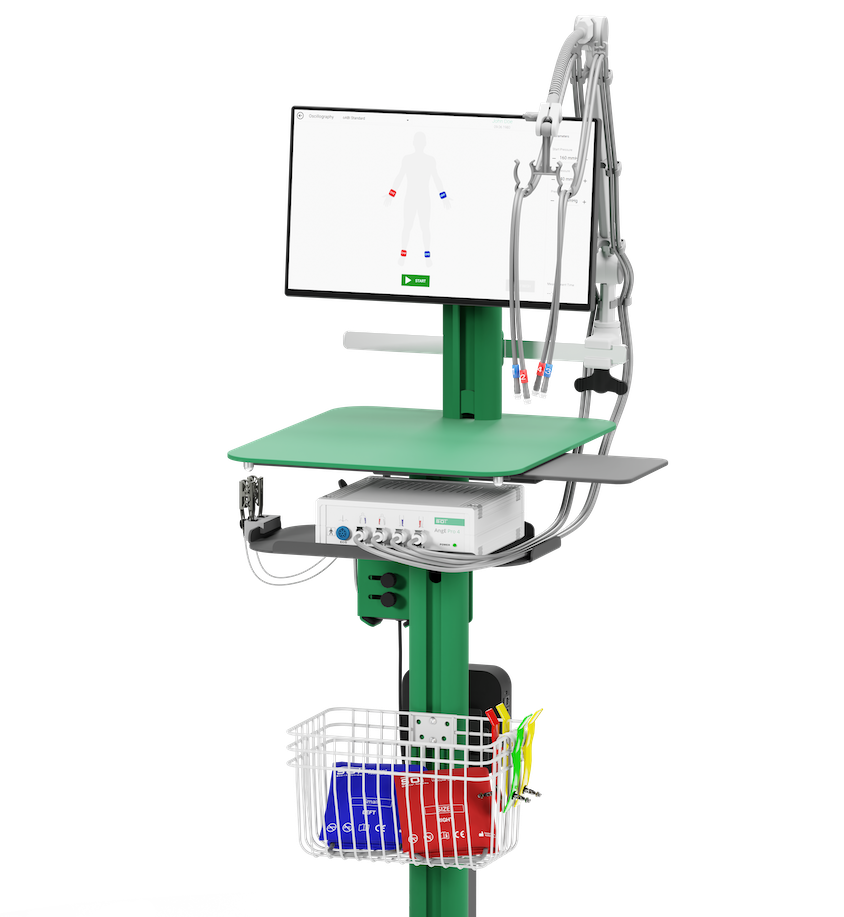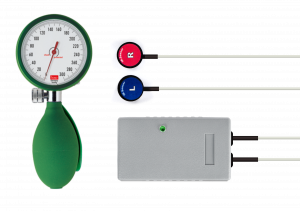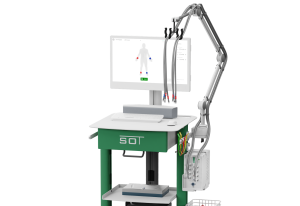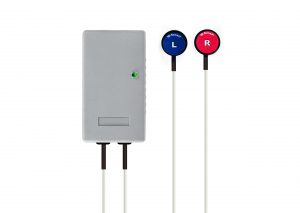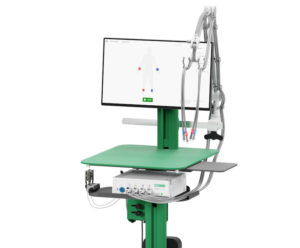
AngE™ ABI+
Vascular Screening in 1 Minute
🇦🇹 Made in Austria
Request Info ShopTaking Blood Pressure only?
Cardio Vascular Diseases (CVDs) are the World's leading Cause of Death.
1 Minute Screening - Blood Pressure Independent
Simultaneously record on all limbs, regardless of blood pressure and calcified vessels.
Apply the cuffs on all limbs simultaneously and get your results within 1 minute automatically. By combining ABI and PWI™, the AngE ABI+ provides an objective assessment of the arteries, independent from high blood pressure (25% of population) or calcified arteries (up to 30% of diabetics).
Multiple Parameters
Fast and easy simultaneous oscillometric assessment of Ankle-Brachial-Index (ABI), Pulse Wave Velocity (PWV), the blood pressure independent Pulse Wave Index (PWI™) and many more.
Vascular and Heart-related conditions
An advanced ABI device designed for efficient and precise assessment of vascular and heart-related diseases, such as Peripheral Arterial Disease (PAD), limb ischemia and blood pressure differences.
Optical add-on module
Use two additional optical PPG probes to determine Toe-Brachial-Index (TBI), systolic Toe Pressure and Skin Temperature.
macOS and Windows
The AngE Software offers precise analysis and works natively both on macOS and Windows computers.
Main Protocols and Parameters
| ABI – Ankle Brachial Index | PWI™ – Pulse Wave Index Blood-Pressure-Independent |
PWV – Pulse Wave Velocity | Rise Time and Amplitudes |
| Segmental Oscillography (4 cuffs on one leg) |
Optional: TBI – Toe Brachial Index + Skin Temperature | Optional: Systolic Toe Pressure | Optional: HRV – Heart Rate Variability / ECG |
Related Conditions
| PAD – Peripheral Arterial Disease / Atherosclerosis | Limb Ischemia | Arterial Stiffness | Blood Pressure Differences |
| Diabetic Foot / Ulcera | Arhythmic Heartbeat / Arrhythmia | TOS – Thoracic Outlet Syndrome | Raynaud’s Syndrome Protocol |
4-Channel Oscillography
Simultaneous recording on all limbs.
Apply Pulse Volume Recording (PVR) on all limbs at the same time to quickly determine the slightest side differences.
The oscillometric ABI, Pulse Wave Velocity (PWV), Pulse Wave Index (PWI™) and other parameters will be automatically calculated during the test.
Use the build-in Exercise Stress-Test to detect variations pre and post provocation.
Visit the ShopWhy it's important to
early diagnose Peripheral Arterial Disease (PAD):
are affected
PAD affects 12-14% of the world's population.*
are asymptomatic
Up to every other PAD patient does not experience symptoms and is likely not diagnosed.*
die within 4 years
Only 50% of PAD amputees survive more than four years.*
Detailed Reporting
One-page overview report.
Get all calculated parameters and pulse wave recordings on a one-page printable PDF report.
All at a sight.
Use your custom clinic logo and contact details to ensure a seamless branding towards your patient.
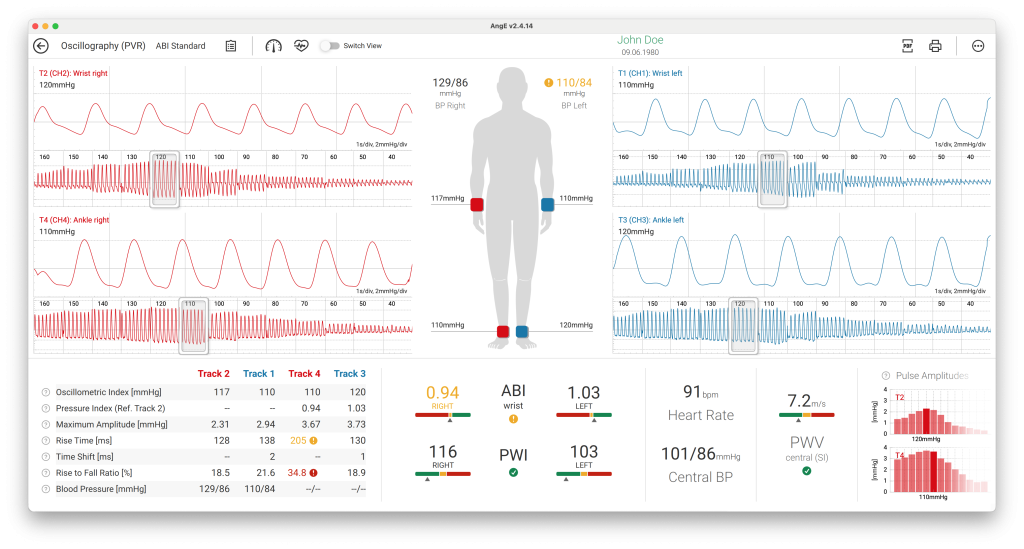
Extendable
Add even more test applications.
Any time.
The AngE™ ABI+ system is designed to be as modular and extendable as possible to stay flexible to your needs.
Add various arterial (Toe Pressure, TBI) and venous test applications (such as Venous Reflux PPG, Venous Valve and Muscle Pump test), as well as ECG (for Heart Rate Variability) with our individual upgrade modules.
The database is compatible and you can simply keep on working with the same patient files as before.
Visit the Shop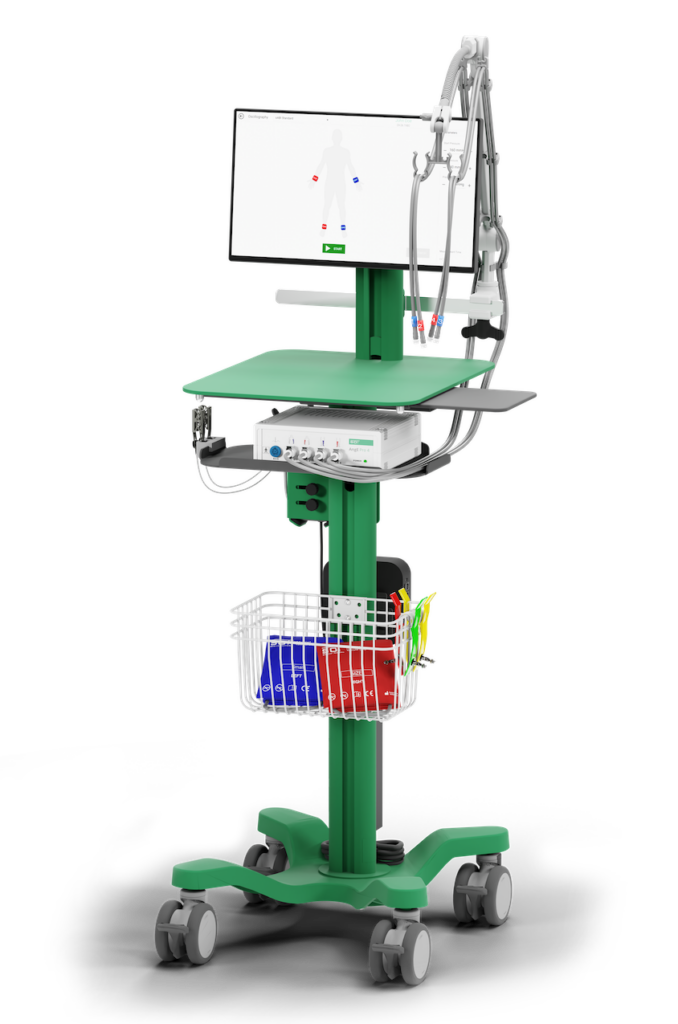
Intuitive Analysis Software
Easy application, sophisticated assessment.
Our modern AngE™ software makes it easier than ever to prepare and conduct the measurements.
The touch-screen optimized user interface is intuitively simple to use and is designed to significantly reduce the learning barrier.
Further improvements:
- Runs natively on macOS and Windows computers
- DICOM and HL7 compatible
- PDF export with custom clinic logo
- Direct report comparison
- Supports photo documentation for each test
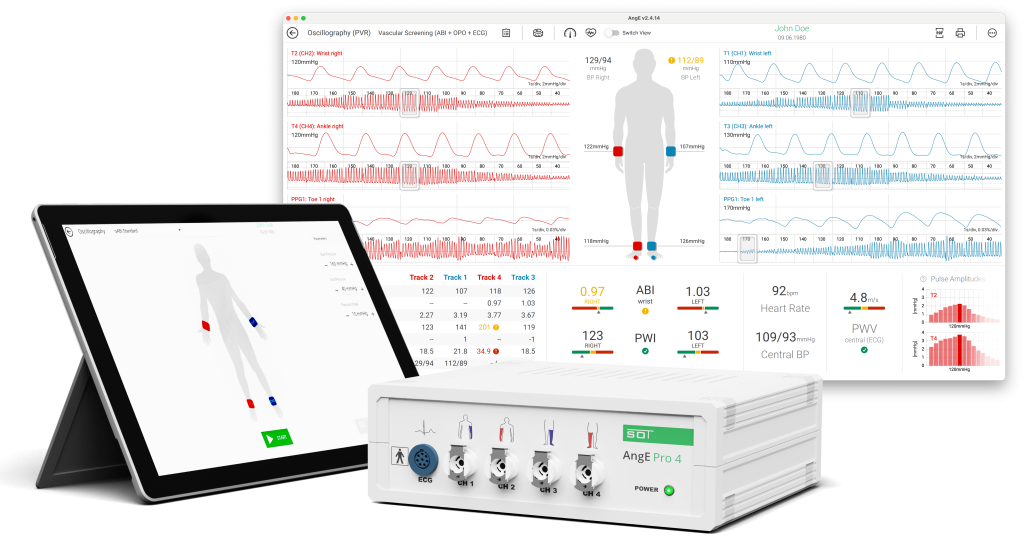
The high sensitivity of the optical sensors allow for a good documentation of the pulse waves, even with marginal blood flow. Given the virtually unfiltered display of pulse curves, dicrotic waves can be clearly identified for healthy and elastic arteries.
Benefits of AngE™ ABI+
Time Saving
1-Minute Screening compared to ~10min. Doppler ABI or ~20min. TcpO2 test.
Accurate
Cuffs measure all Vessels and Collaterals at the same time (compared to one vessel at a time with Doppler).
Simultaneous
Direct left and right comparison to detect slightest side differences in timing and amplitude.
Standardized
Comparable measurements (to detect trends) and reduction of human error. No additional training needed.
Recent Scientific Publications
"Time consumption for testing was significantly lower using the semiautomated AngE-device – a finding that is economically important, especially in high volume centers and epidemiologic studies."
– Mayr, Hirschl, Klein-Weigel, Girardi, Kundi; 2019
What's in the box
AngE™ Pro 4
Ankle, Wrist and Arm Cuffs
AngE™ Software
Request Quote
Submit the form and an SOT expert will be in contact shortly.
* Sources:
World Health Organisation, 2014;
AHA – American Heart Association, "Asymptomatic Peripheral Arterial Disease Is Associated With More Adverse Lower Extremity Characteristics Than Intermittent Claudication", 2007
References
1. Automated oscillometric blood pressure and pulse-wave acquisition for evaluation of vascular stiffness in atherosclerosis. (Massmann et al. 2017)
2. Diagnostic Accuracy Study of an Oscillometric Ankle-Brachial Index in Peripheral Arterial Disease: The Influence of Oscillometric Errors and Calcified Legs. (Herráiz-Adilo et al. 2016)
3. Interrater and intrarater reliability of photoplethysmography for measuring toe blood pressure and toe- brachial index in people with diabetes mellitus. (Scanlon C. et al. 2012)
4. Photoplethysmography detection of lower limb peripheral arterial occlusive disease: a comparison of pulse timing, amplitude and shape characteristics. (Allen J et al. 2005)
Excellent Support
in 60 Seconds
Our product experts in Austria will help you with remote support without any waiting time or ticket system. Call us during office hours and we will help you within 60 seconds.
Mo - Th: 8am - 5pm, Fr: 8am - 12am
